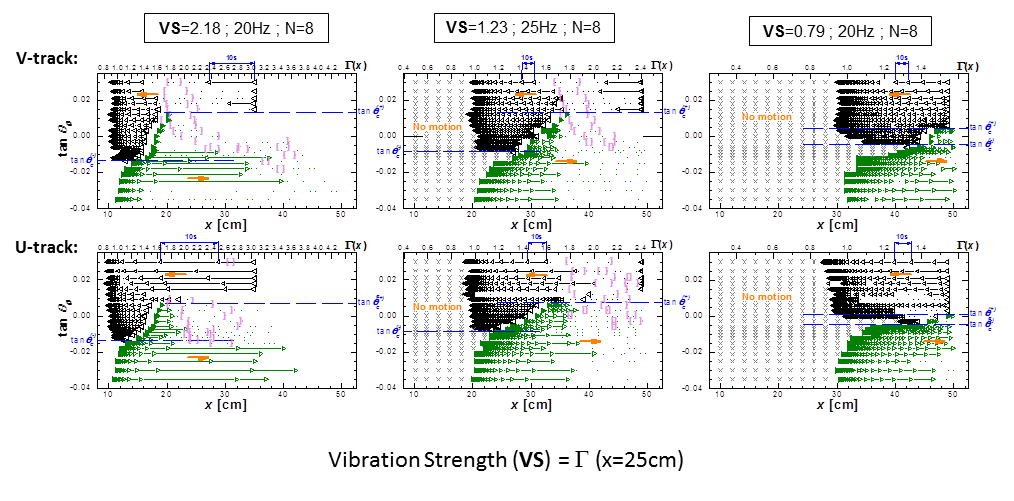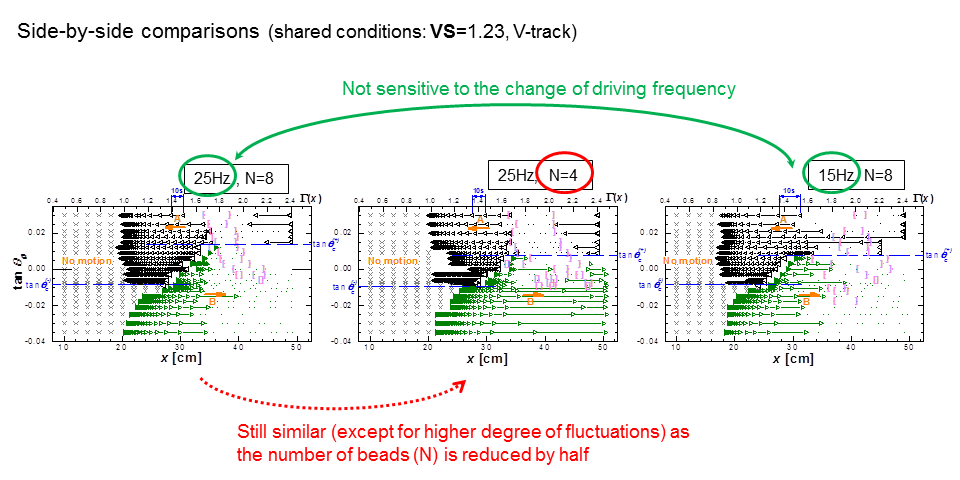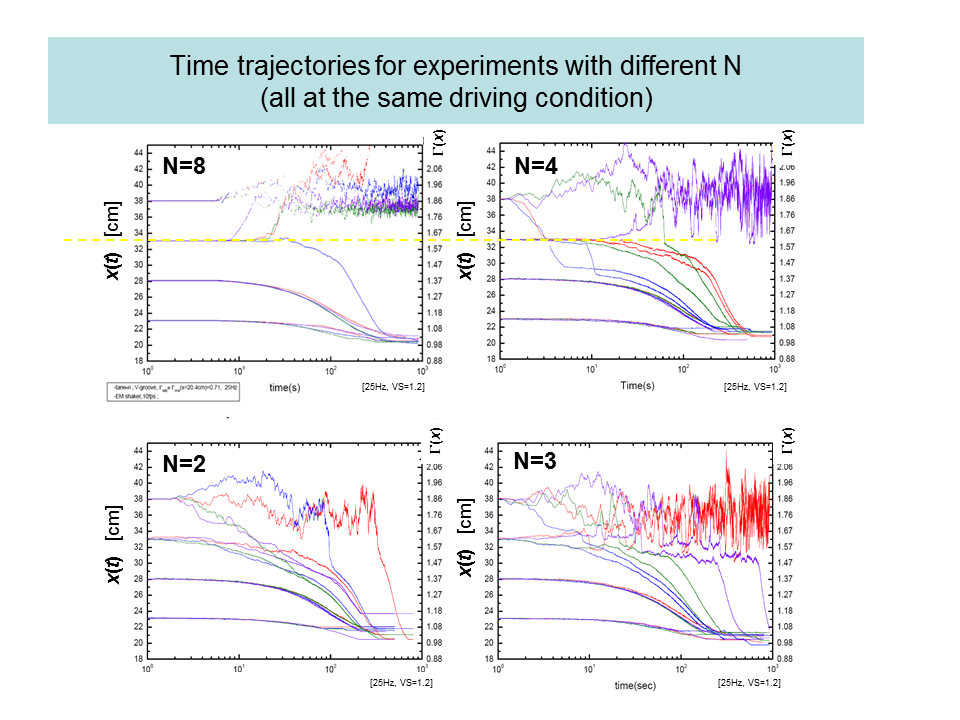
(a) The existence of the two phases of ratcheting is insensitive to the type of the confining track (U or V), and is robust for the change of the vibration strength (VS) by about a factor of three—see the following graph.

These phase boundaries can also be re-cast in one master graph using the value of local acceleration in place of the spatial coordinate x.
(b) We have also verified that these generic behaviors are insensitive to the change of driving frequency (from 25Hz to 15Hz), and to the reduction of the total number of beads along the chain by half (from N=8 to 4)—see the following graph.

(c) Further reduction of the total number of beads along the chain reveals that the ratcheting towards the increase of the excitation does require a sufficient number of N. The “spatial divide” becomes less obvious as N decreases.
